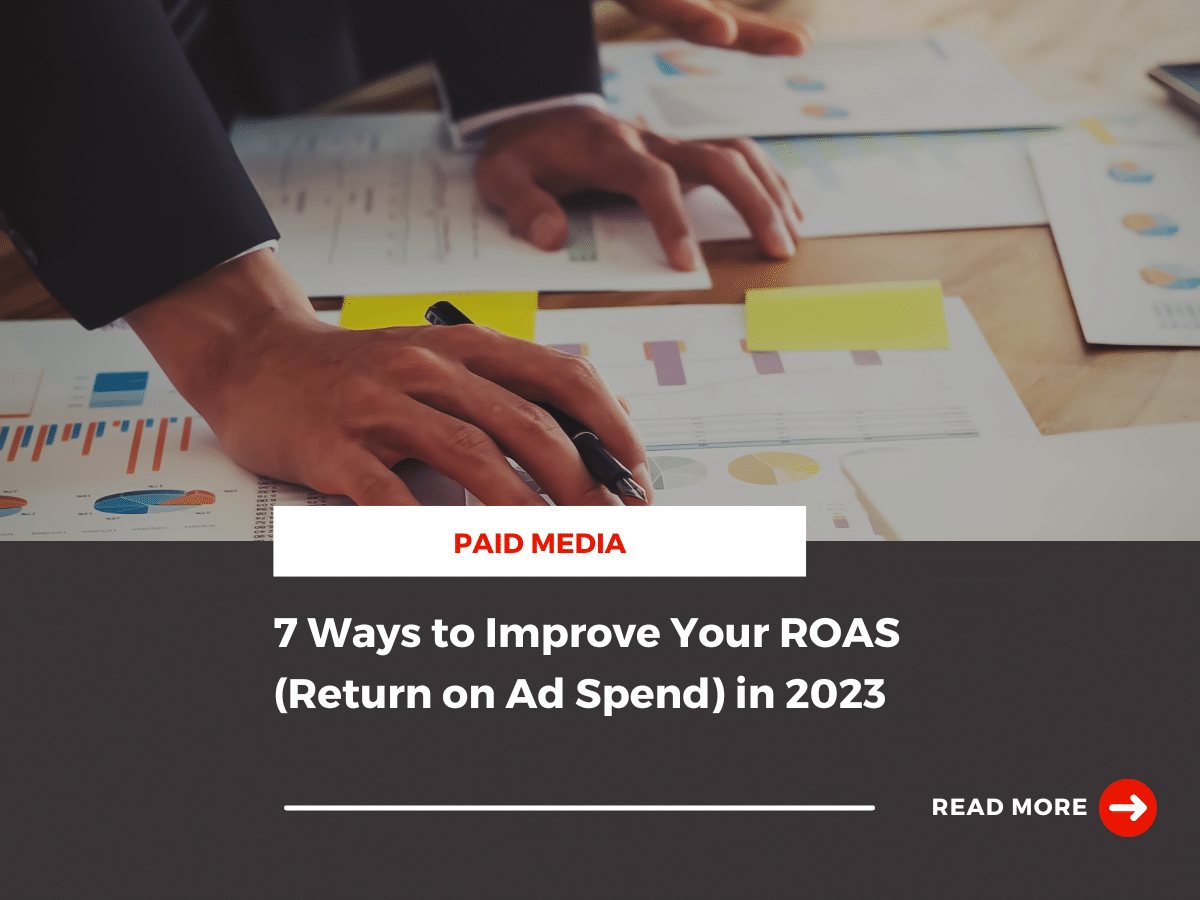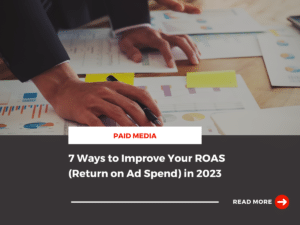For most businesses, advertising is an integral part of their marketing strategy. These paid opportunities allow you to expand your reach to new markets and retarget your products and services to your current customers.
However, when was the last time you took a step back and analyzed the results of your campaigns? Are your PPC ads on Google or any social media platforms truly worth the investment you’re making on a monthly or daily basis?
The only way to know is if you’re tracking your return on ad spend (ROAS).
Marketing professionals use this calculation to understand the effectiveness of their marketing strategy and ensure their marketing budget isn’t going to waste.
We’re here to walk you through everything you need to know to learn how to improve your ROAS, so you can get more out of your advertising strategy.
Let’s dive in.
What is ROAS?
ROAS is an acronym for return on ad spend. It’s a marketing metric you’ll want to use to see how much revenue is generated for every dollar you spend on a paid campaign.
You can use this KPI to understand the success of your advertising strategy as a whole or take a more granular approach by assessing the success of your targeting or types of campaigns.
How To Calculate ROAS
Just like other marketing key performance indicators, ROAS can be calculated using a simple formula. Many advertising platforms will show you your ROAS for a specific campaign on their platform. However, if you want to take a broad approach, you’ll want to use the formula below.
ROAS = (attributed revenue from ads/cost of ads)
Let’s break it down:
Let’s say you’re running an ad campaign that generates $4,000, and you invested $2,000 into the advertising campaign. If you plug these numbers into the formula, you’d get a 2. For every $1 you spent, you gained $2 in revenue – which is pretty great!
This formula is a great tool to help you keep a pulse on the success of your advertising strategy as a whole, especially if you’re using more than a few advertising platforms.
As a general rule of thumb: A good ROAS is anything above a 2. While the average ROAS for businesses is a 2, you should always aim for a 3 or a 4.
ROAS vs. ROI
While they may feel these two KPIs are the same – ROAS and. ROI work together to provide you with the complete picture of your success. To put it simply, ROAS focuses on the success of your advertising spend, and ROI looks at your company’s overall success.
Typically, ROAS will focus on your short-term goals. It’s something you’ll want to continue to check in on every quarter or at the end of every month to ensure you’re getting the most out of your advertising budget.
While ROI is going to look at your overall return on investment. Your return on investment is your net revenue after all your expenses have been accounted for. ROI is a bigger-picture metric that will help you understand your overall profitability, outside your advertising.
Ways To Improve ROAS
1. Google Performance Max Campaigns
Google Performance Max campaigns allow businesses to take an automated approach to their ad strategy. To get started, you would provide Google with the targets, assets, feeds, and budget you can work with for your campaign. Google will then use this information to create a goal-based campaign that helps you increase conversions and improve your ROAS.
This is a worthwhile tool, especially if you aren’t familiar with how ROAS Google ads work or your ads aren’t seeing results.
2. Don’t Forget About Negative Keywords
Negative keywords are used in PPC campaigns on Google and other search engine platforms. They allow you to exclude specific search terms to finetune your campaign and gain a better ROAS.
If you aren’t incorporating negative keywords into your ads, you risk wasting your budget on all the wrong keywords. With the right negative keywords, you can increase the efficiency of your ads and ensure your ads are being displayed for the right target audience.
3. Optimize Your Ads For Mobile
The truth is: Over half of your target audience uses a mobile device to access the internet. Whether it’s a quick Google search, they’re scrolling through social media, or checking their email: A mobile device is the quickest way to access the internet.
This means you’ll want to be mindful of your creative components and create a landing page optimized for mobile devices. If your ads aren’t optimized for mobile devices, it could negatively impact your CRO, ROAS, and ROI.
4. Create Custom Landing Pages for Your Ads
If all your ads do is direct your audience to your home page or the product page: It could negatively impact your ROAS and CRO. Always consider the customer experience and how you can make it as seamless as possible.
For example, let’s say you’re running an ad campaign for a free demo of your product. Consider creating a custom landing page that complements this ad campaign you’re running. Consider which elements are a must-have and which ones you can live without. Don’t forget to add a CTA and ensure the copy complements the ads they are tied to.
5. Consider Geotargeting
Geotargeting is a great tool that can help you target an audience in a particular area. Whether you have an event in a location or a service for a city: using location-specific targeting will help you get more from your ad spend.
Think about it this way. If you only provide services to New York City, you wouldn’t want people from New Jersey or neighboring cities to see your ads, too. With a location-specific approach, you can ensure the right people have their eyes on your content.
6. Keep Track of CRO
CRO and ROAS go hand in hand. If you’re getting clicks but aren’t seeing sales, you’ll want to rethink your conversion rate optimization strategy and look for ways to get shoppers to complete their purchases.
Here are a few things you can do to improve your CRO.
- Set up an abandoned cart series
- Incentive with a discount or free shipping
- Set up a chatbot
- Have retargeting campaigns
- Set up exit pops with a discount
7. Think About the Timeliness of Your Campaigns
You won’t always see the results you want if you only focus on evergreen content or standard advertising creatives. By tailoring your content to align with special events, seasons, holidays, and limited-time offers, you can create a sense of urgency that will push your customers to purchase.
Consider adjusting copy and the creatives you use to catch the viewer’s attention. Think about what products or services you offer that would do great during particular times of the year.
At the end of the campaign, analyze the results and compare your ROAS to other generic campaigns you’ve run. If you see better results, you can continue to take a more tailored approach to your advertising strategy.
Get to Your Target ROAS With Kanbar Digital
If you want to get more from your return on ad spend, you’ll need to make mindful changes to your advertising strategy. Whether you want to improve your ROAS for Google ads or for a particular social media platform: We’re here to help. At Kanbar Digital, our team can find new opportunities and get you one step closer to getting you one step closer to the target ROAS you want.




